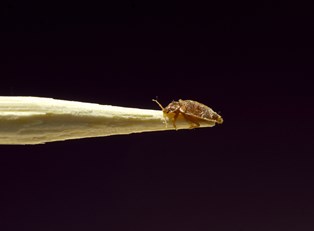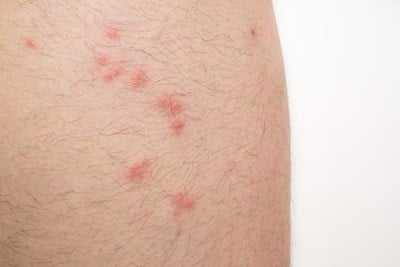Cimicidae, or bed bugs, are small insects that feed on the blood of humans and other warm-blooded animals. The term "bed bug" comes from its preferred habitat: the bed. Aside from beds, they can dwell on other soft furniture in homes.
These bugs are increasingly becoming a problem in the United States and other developed countries, as they invades hotels, dormitories, apartments, and even military barracks. While these insects are very small, they can be seen by the naked eye. However, they largely go unnoticed since they are most active when people are sleeping, and they hide when disturbed. Newborns are as small as a seed, but adult bugs are bigger, measuring around .25 inches long. Their lifespan varies by species and their rate of feeding. While these parasites can withstand various atmospheric compositions and temperatures, they cannot withstand high levels of carbon dioxide for very long. Cimicidae can survive for a year without feeding, but they usually feed themselves every five to 10 days. They can live for almost a year in cold weather and about five months at temperature levels more conducive to feeding and activity. Identifying infestation causes is essential to the effective prevention and eradication of these pests.
Bed Bugs Symptoms
Bed bugs can cause several negative health effects, such as allergic symptoms, skin rashes and psychological effects. They secrete saliva when they bite their host or victim's skin. This makes the host more sensitive, and a mild or severe allergy may occur. Cimicidae bites can even cause skin lesions similar to mosquito bites. The popular belief that dirtiness leads to infestation is not really true. They can be present even in the cleanest homes as long as there is an available source of blood. Similarly, poverty is not one of the causes, contrary to common belief. Some of the actual causes are eggs and bugs that hitchhike on clothing, in luggage, and on pets; clothing and furniture being brought in; and nearby infested dwellings. Wild animals and people traveling from a source of infestation are also common sources of the spread of these parasites. Cimicidae are found all over the world; in fact, infestation rates in developed nations have risen significantly since the 1980s, probably due to increased international travel and resistance to insecticides. But during the 1930s to 1980s, they decreased in numbers, largely due to the use of DDT, simplified furniture designs, and the use of modern vacuum cleaners.
Bed Bugs Treatment
Bed bugs can be eradicated through a combination of non-pesticide and pesticide approaches. A pest control representative can administer an intensive treatment plan. A complete checkup of the dwelling may be performed in order to determine the cause, the level of infestation, and the procedures needed to eradicate these pests. Pesticides in the form of sprays, powder, and aerosol may be used if the infestation is mild to average. Pesticides such as nalathion, pyrethroids, and dichlorvos have historically been proven effective against cimicidae, but these insects have developed resistance over the years. Concerns have also risen about the negative effectsof pesticides on human health. Due to the harmful effects caused by pesticides to the health of the planet as a whole, non-toxic pesticides have been developed. The public is urged to use eco-friendly treatments to save the planet and promote healthy living. Other methods to get rid of these bugs are various mechanical approaches such as heat treating mattresses, vacuuming, filling cracks and scrubbing infested areas. Mattresses can also be enclosed in plastic bags to stop cimicidae from nesting in them.



